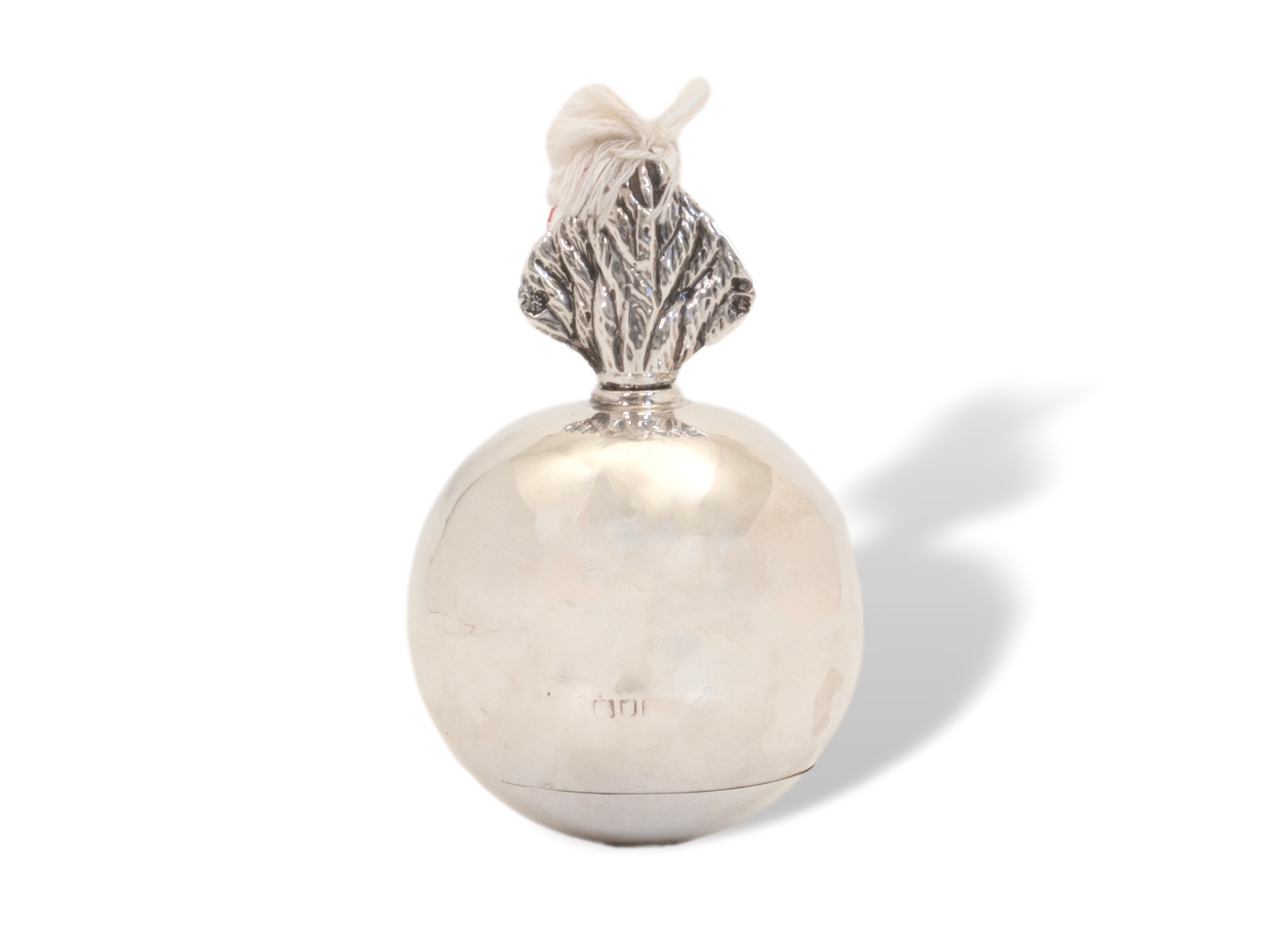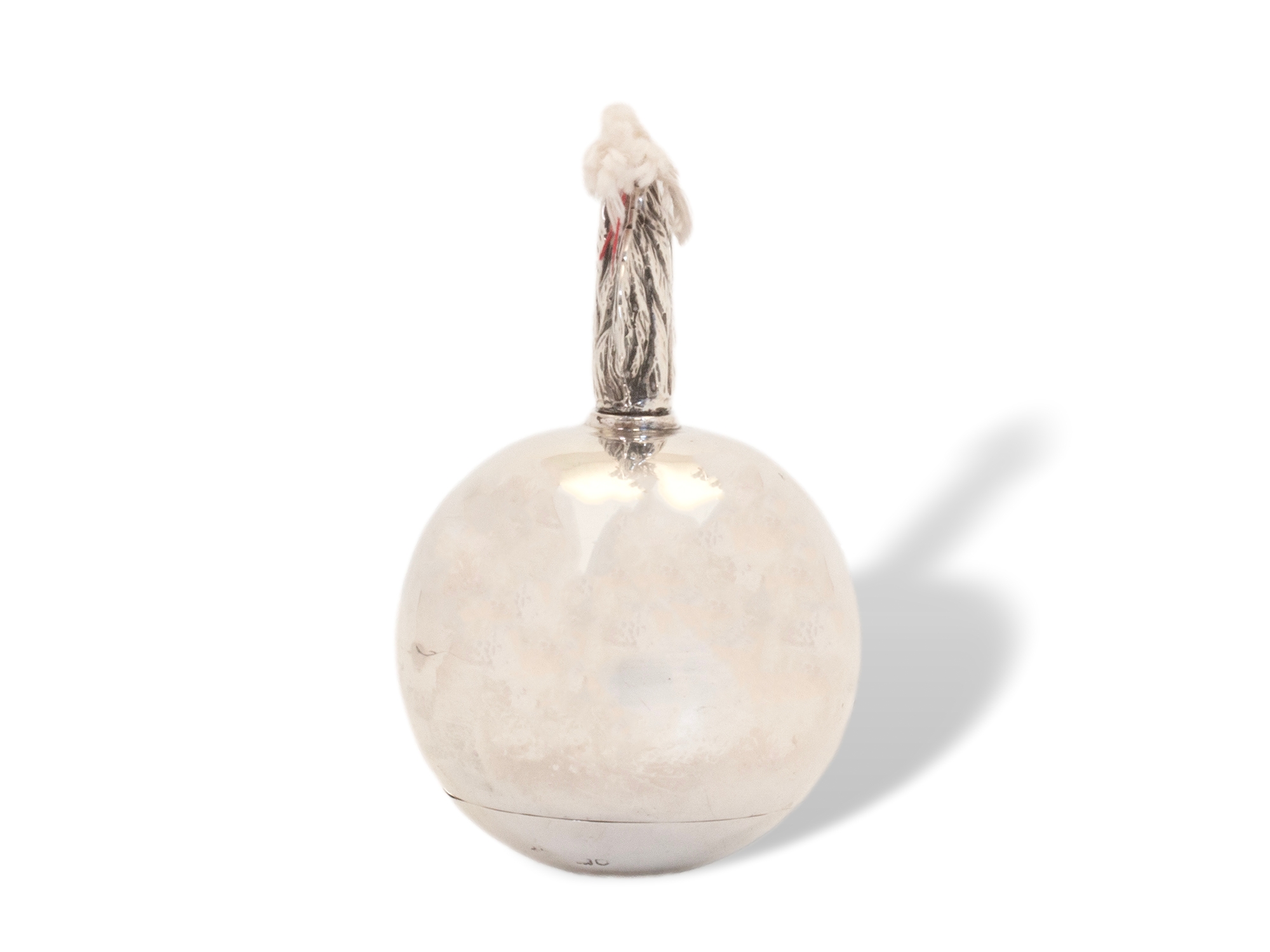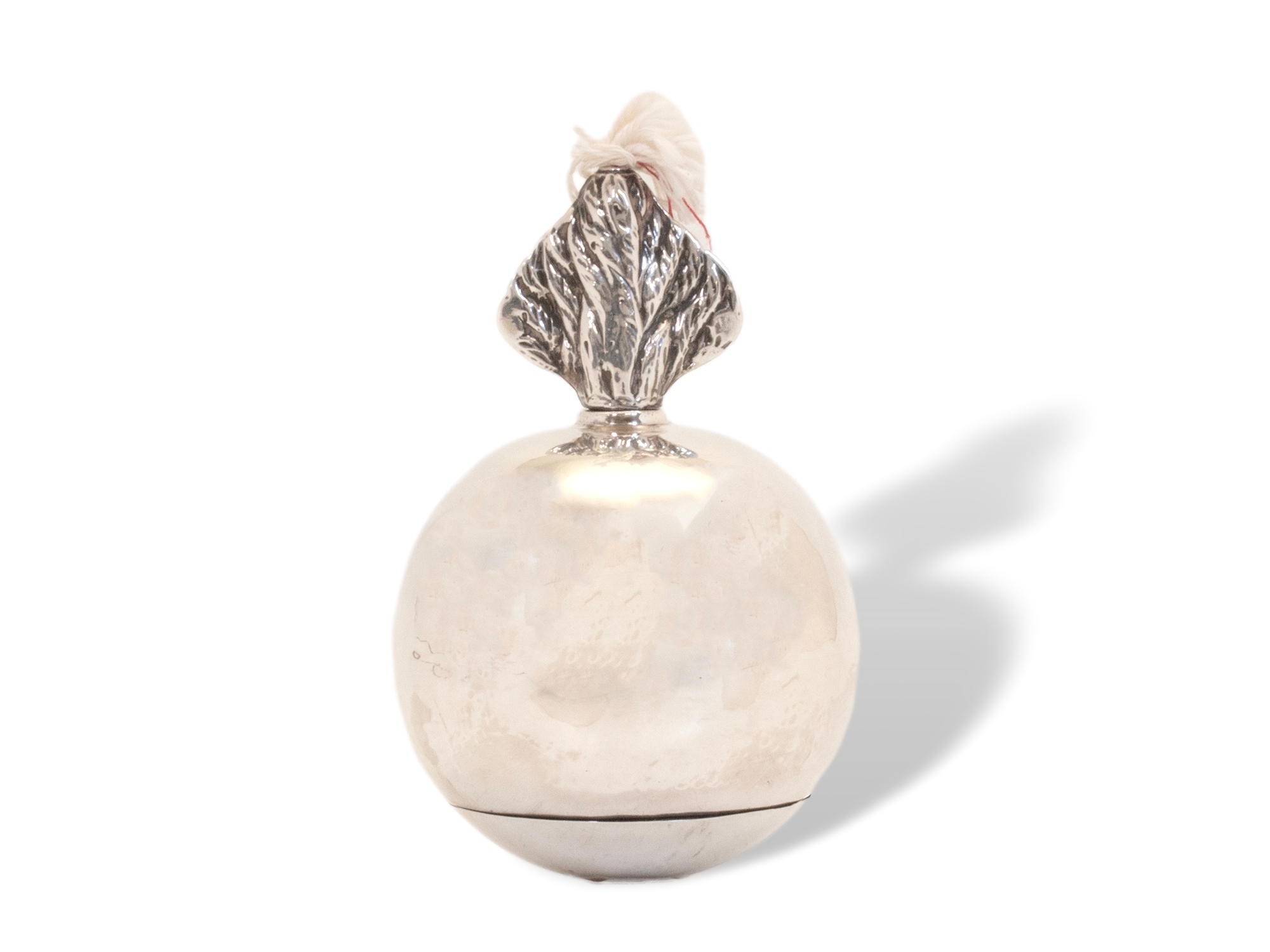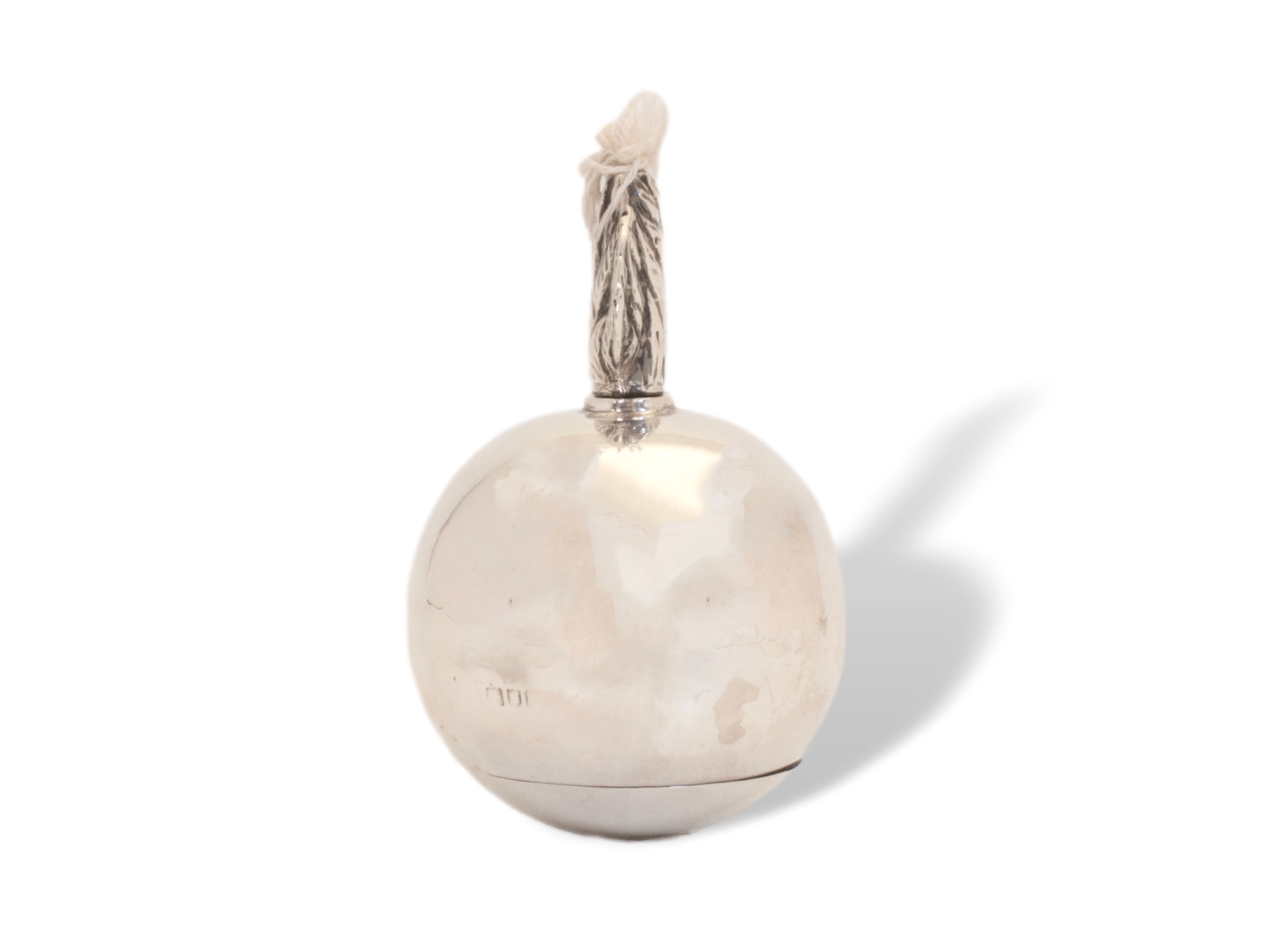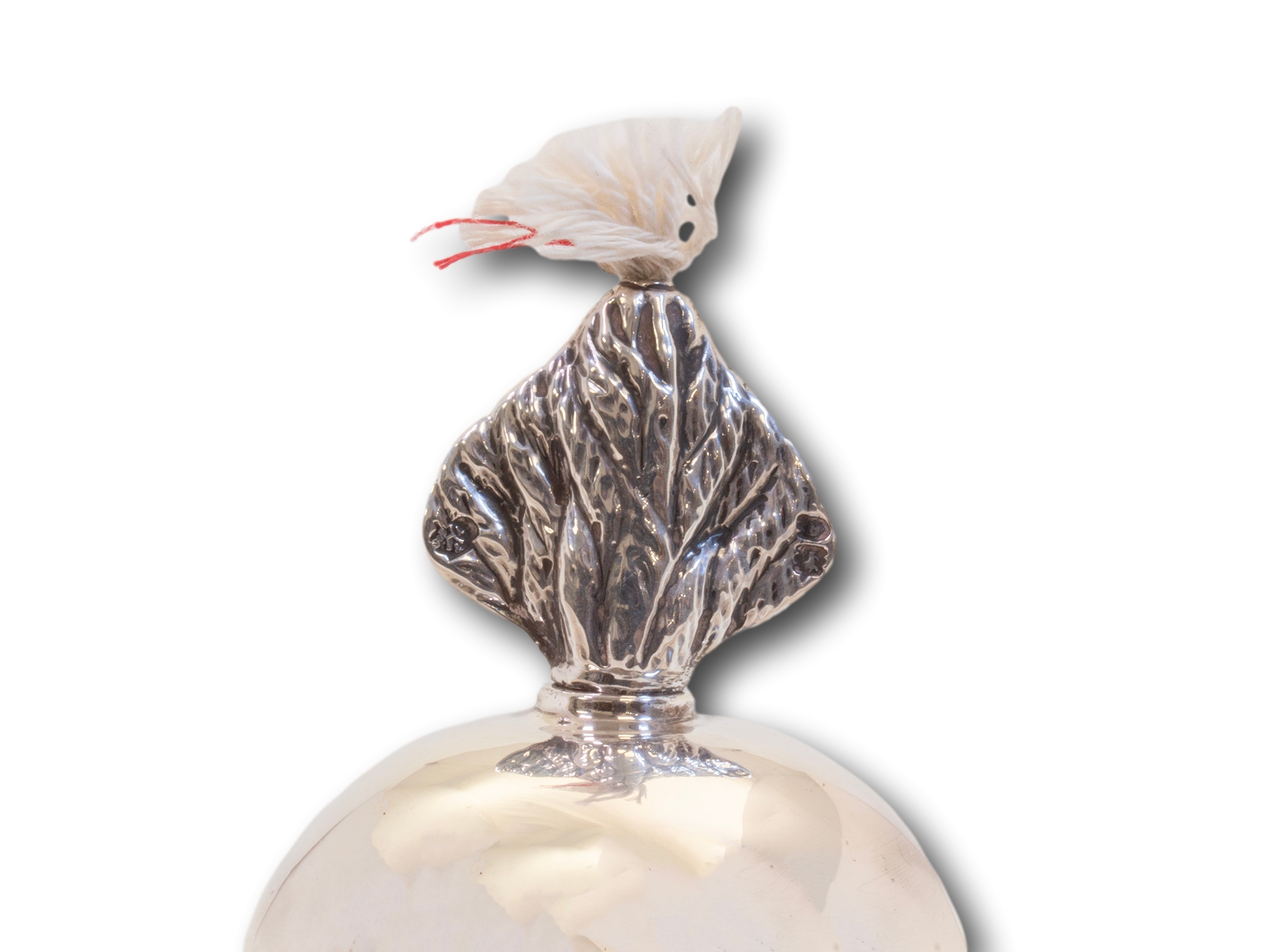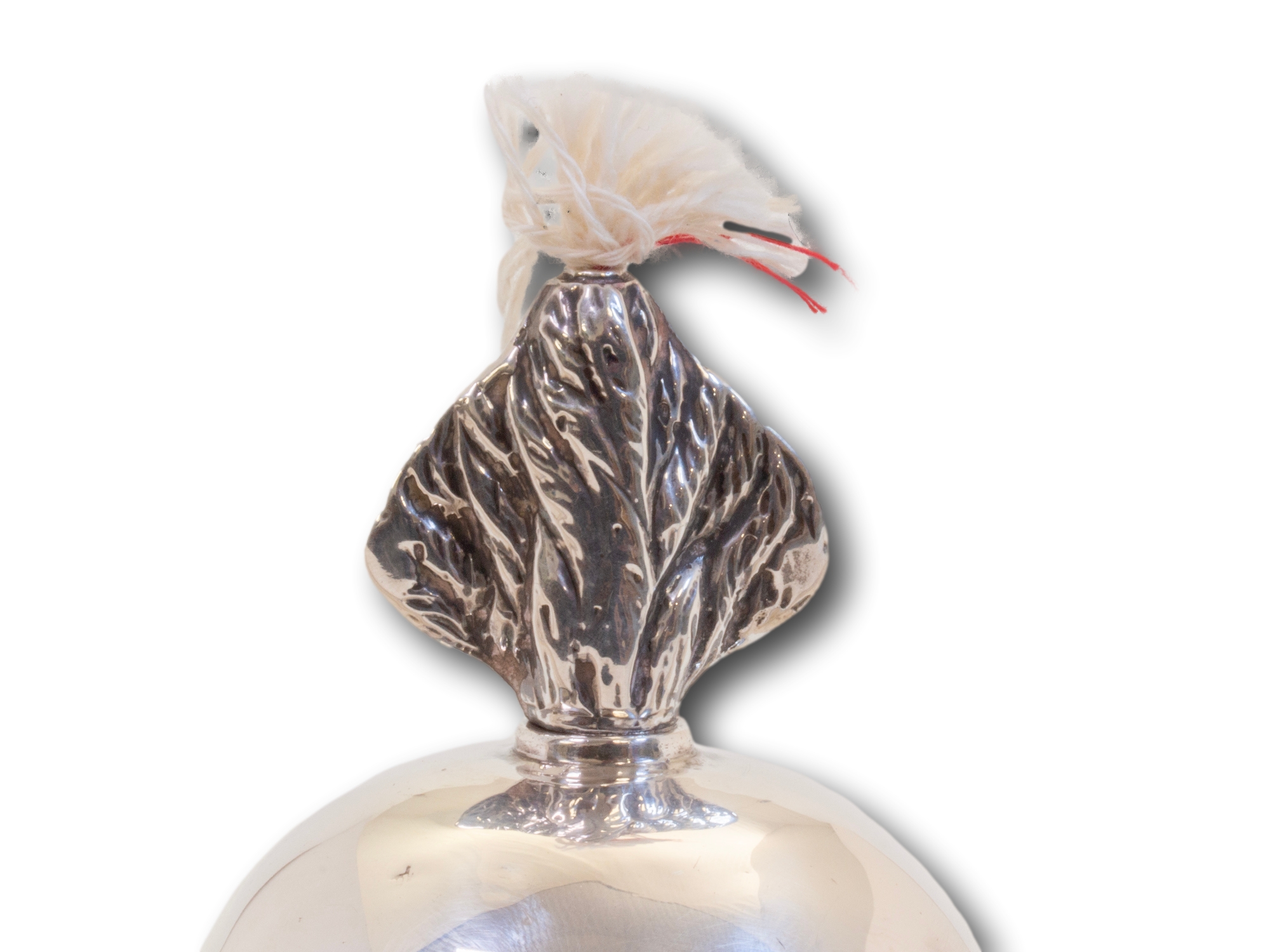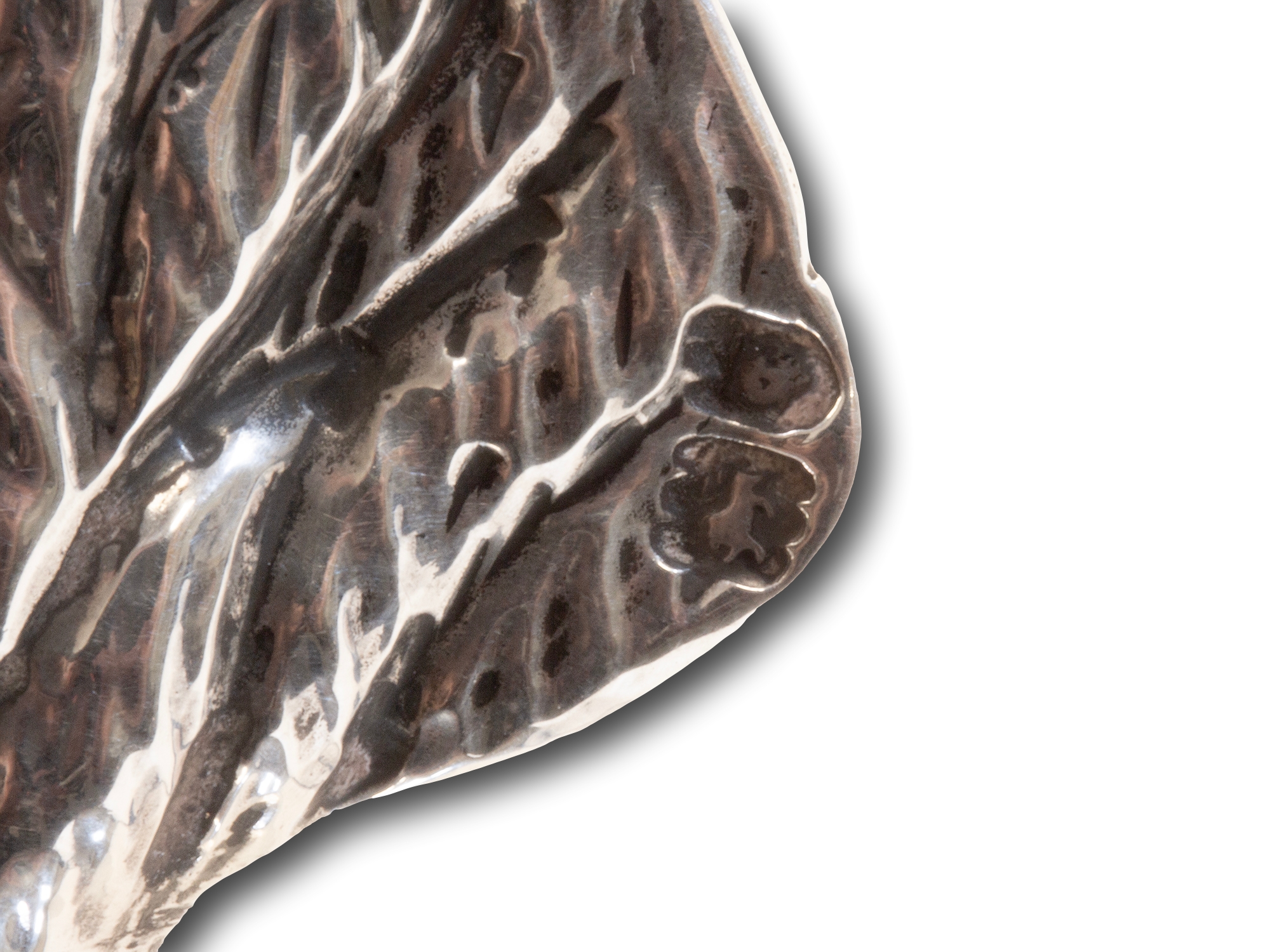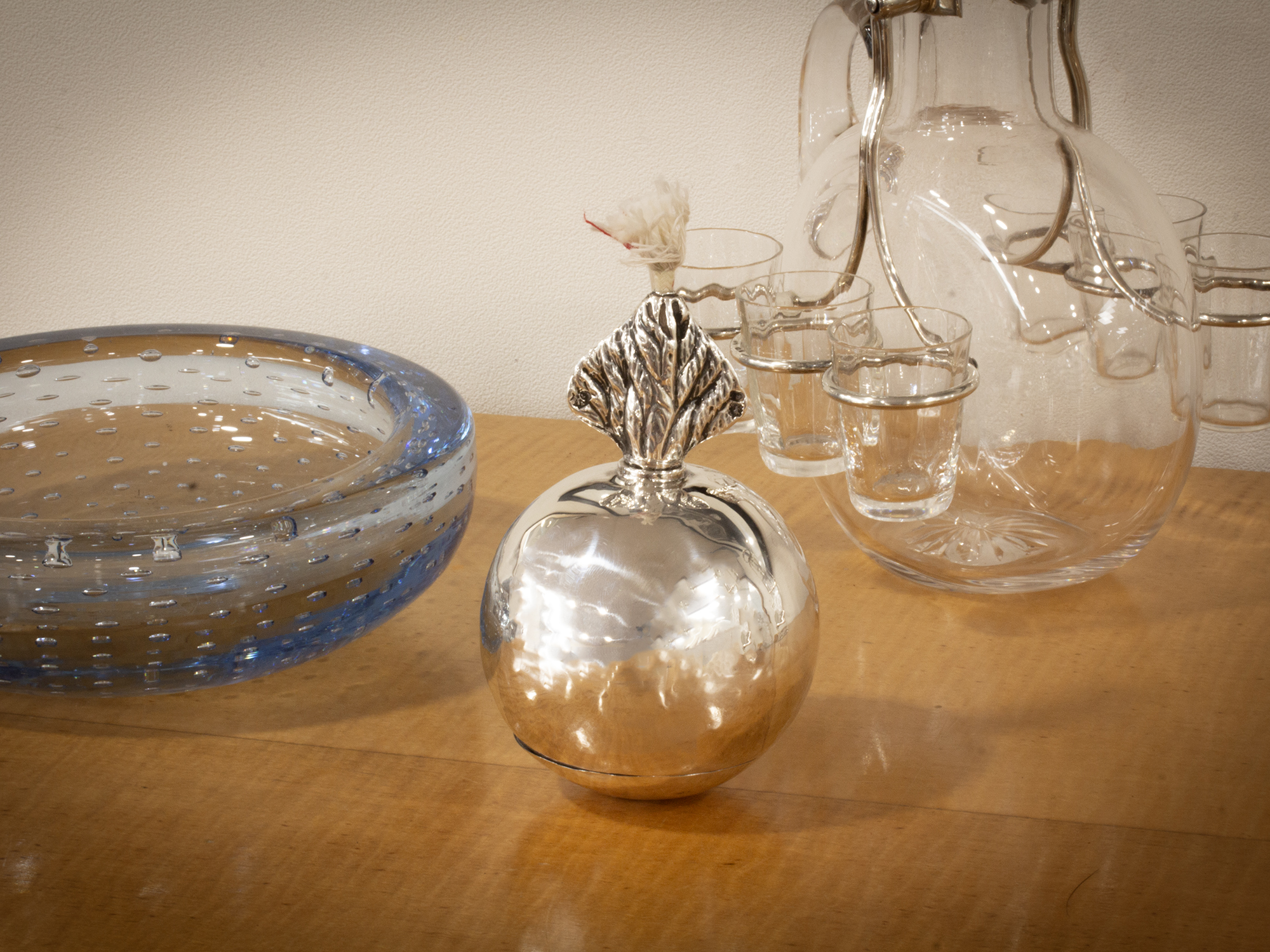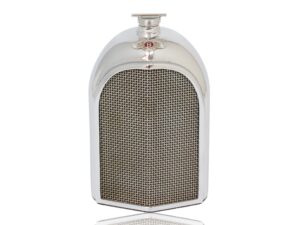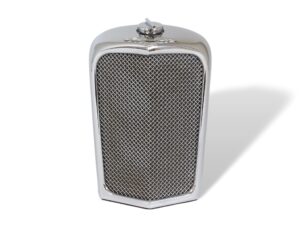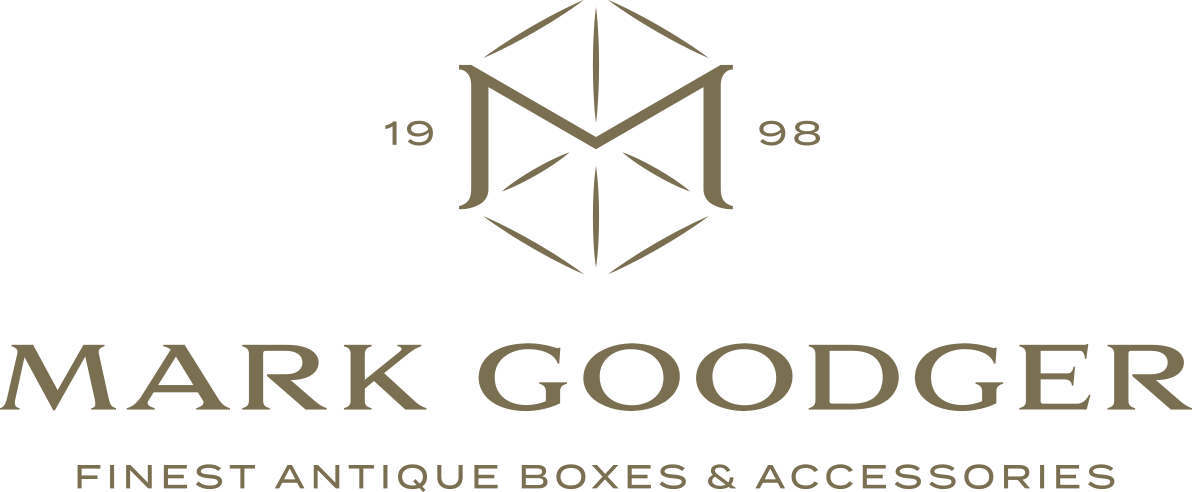Sterling Silver Military Grenade Table Lighter
SOLD
Featuring a Flaming Wick From our Accessories collection, we are pleased to offer this Sterling Silver Grenade Table lighter. The lighter of spherical shape with an gloss silver body, flaming top and upper wick shaped as a military grenade. The... Read More
Hallmarked William Hutton & Sons
| Dimensions | 7.5 × 11 cm |
|---|---|
| Period | |
| Year | |
| Medium | |
| Country | |
| SKU | 501482MGE |
Description
Description
Featuring a Flaming Wick
From our Accessories collection, we are pleased to offer this Sterling Silver Grenade Table lighter. The lighter of spherical shape with an gloss silver body, flaming top and upper wick shaped as a military grenade. The Lighter with internal wick that can be lit at the top allowing it to be used as a table lighter for several people and is weighted to stop it from falling over while alight. This piece is in good working condition, and the flame unscrews easily. However, these lighters were made to slide across mess tables, which often caused some damage. This has some small bruises, please see the images for a closer look. The lighter is hallmarked to the side, base and flame by William Hutton and Sons, London circa 1900.
Measurements (inches) 4.3 x 2.95
William Hutton & Sons was a Silver manufacturer founded in 1800 by William Hutton in Birmingham and shortly transferred to Sheffield in 1832 where they also became platers having licensed the electroplating technique from Elkingtons they operated from 27 High Street (140-146 West Street from 1886). William’s son, William Carr Hutton continued the business after his father’s death and operated under the same business name until 1864 when it was changed to William Hutton & Son (when William Carr’s son, Herbert Hutton, joined him). When William Carr died in 1865, the firm’s name was again changed to William Hutton & Son(s) when Herbert’s brothers joined him. They opened a London showroom in Holborn in 1863, which then moved to Farringdon Road in 1891 operating until 1918. The Huttons developed a new nickel alloy that was good for plating in the late 1800s and it became known as British Plate. They sent their machine-made silver flatware from Sheffield to be hallmarked in London. They acquired Rupert Favell & Co in 1893 and also registered as a limited company (William Hutton & Sons Ltd). In 1902, they bought Creswick & Co. and started to use their crossed arrows mark. They became renowned for the quality of their Arts & Crafts silverware items at the turn of the 19th/20th century. They were taken over by James Dixon & Sons in 1930.
Sterling Silver is an alloy composed by weight of 92.5% silver and 7.5% other metals, usually copper. The sterling silver standard has a minimum millesimal fineness (parts per thousand) of 925.
With every purchase from Mark Goodger Antiques, you will receive our latest catalogue, a Certificate of Authenticity, detailed care instructions for your chosen piece and an independent invoice (for insurance purposes) will be enclosed. As well as being protected by a no-hassle, money-back policy, your piece will be entirely insured during the shipping process to ensure the safety of your item.
Additional information
Additional information
| Dimensions | 7.5 × 11 cm |
|---|---|
| Period | |
| Year | |
| Medium | |
| Country | |
| SKU | 501482MGE |
